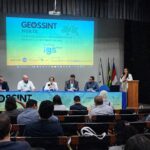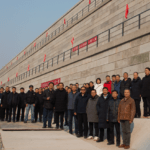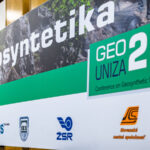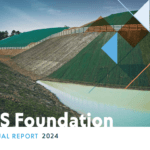

Established nearly three decades ago, the Indonesian Chapter of the IGS, known as INA-IGS, is working hard to improve the understanding and take-up of geosynthetics products in the region.
Here, Chapter President Professor Budijanto Widjaja, Vice President Mike Dobie and team share some of the chapter’s activities and focus.
Tell us a bit about your membership.
We were formed in 1992 and our membership is currently made up of 54 individual members
and five corporate members. At the moment we don’t have a youth section but we do involve students in our activities.

What are you proud of in the chapter?
The majority of the chapter is made up of manufacturers, suppliers and distributors of geosynthetic products (with some help from academics and others, such as our President and Secretary), yet we still operate in a cohesive and interactive way, and have created some very good events over the years.
We also recently created several sub-committees to help run the chapter. These are Public Relations, Offline Events, Online Events, and Publications, all assisted by our administrator Anggi Debrinda Rama.
Tell me a bit about the geosynthetics market in Indonesia. What is the level of understanding and adoption of geosynthetics?
A general knowledge of geosynthetics in the civil engineering industry is quite good, but could always be better. Significant use is made of these products in both public and private projects, but a wider ignorance of the correct application and usage remains an obstacle. INA-IGS certainly has a role to improve this situation. Our main ‘competitors’ are traditional construction techniques, but on the plus-side, many of the environmental conditions in Indonesia can result in the effective use of geosynthetics here.
How? Can you explain a bit more?
Most of Indonesia is seismically active so that the ductile nature of geosynthetic reinforced or stabilised structures offers major benefits for construction in these regions. Also, in many locations there is a scarcity of road-building aggregates, so that reduction in thickness of road pavements using geosynthetics can result in significant savings both in material and environmental costs.
Being a huge archipelago of more than 17,000 islands, Indonesia has an enormous length of coastline, so coastal erosion protection techniques using geosynthetics offer major benefits particularly as sea levels continue to rise.
Where are the areas of most opportunity?
This would be in infrastructure development, especially highways and rail, and the plantation, mining and on-shore oil and gas industries.
Is the industry concentrated in particular regions in Indonesia?
Java is the most densely populated island so much use of geosynthetics in infrastructure takes place here. However almost throughout the archipelago of 17,000 islands, there is the use and application of geosynthetics. Mining and oil and gas development are mostly on other islands.
Can you share any notable projects in Indonesia that have used geosynthetics?
We have many completed geosynthetics installations in a number of locations around Indonesia and which use several different applications. These include an MSE retaining wall project at Soekarno Hatta Airport railway in West Java, geomembranes used in the Sulawesi irrigation canal, slope erosion control in various dam projects, and a stabilisation geogrid for a coal mine hauling road in South Kalimantan.
What does the future hold for geosynthetics in Indonesia?
There are plenty of prospects, but plenty of work is required for the industry to take full advantage.
What chapter events or activities are planned for the rest of 2021?
We continue our webinar series with several high profile speakers scheduled, with times and dates to be announced. These include:
-
- October 21, 2021 – Prof. Chungsik Yoo will speak on ‘Implications of geotechnical engineering principles in the design and construction of geosynthetic reinforced walls’. REGISTRATION INFO
- November – Prof. Shannon Hsien Heng-Lee on a topic to be announced.
- December – Andrew Lees will explore ‘Modelling geosynthetics in finite element analysis (FEA).’
We alternate between having local/regional and international speakers. Each session also includes a Q&A and fun quiz with three questions set by the speaker with multiple choice answers. The INA-IGS funds a prize for the winners.
We expect similar activities to continue in 2022 and hope to host face-to-face events next year depending on the Covid situation.























